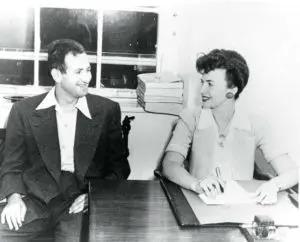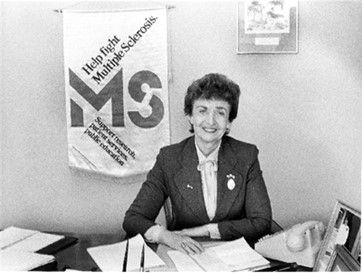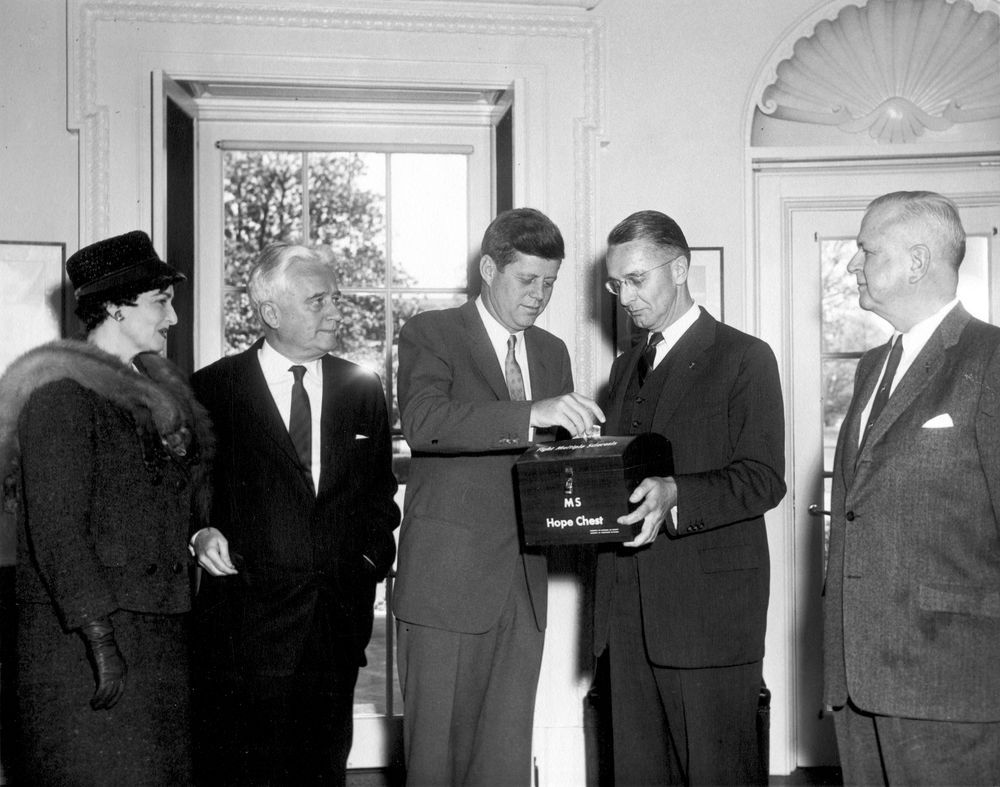About Our Founder, Sylvia Lawry

Launching the MS Movement


Changing What It Means To Live With MS
Lawry’s tireless efforts secured the Society’s first research grant of $54,000. Under biomedical scientist Elvin A. Kabat’s oversight, the project made a groundbreaking discovery and significantly advanced research in the field.Lawry also lobbied Congress and helped establish the National Institute of Neurological Disorders and Stroke in 1950. Since then, the program has received over $1.5 billion in government grants, $110 million of which goes toward MS.Recognizing the need to provide services and funds to those affected by MS, Lawry extended the Society’s reach. Thus, in July 1947, the Advancement of Research on Multiple Sclerosis became the National Multiple Sclerosis Society.Under her leadership, the Society published manuals to educate the public on MS. During the same period, the Society established chapters across the country and introduced various programs to help those with MS and their families.Lawry’s leadership style was direct and no-nonsense, and she instilled confidence in those who worked with her. “She was a slight woman, but she had this presence. Heads turned when she walked down the hall. She created a worldwide movement, and that is bigger than an organization,” said Cyndi Zagieboylo, former president and CEO of the Society, in a Momentum interview.Under Lawry’s leadership, the Society published manuals to educate the public on MS. During the same period, the Society established chapters across the country and introduced various programs to help those with MS and their families.Realizing that MS doesn’t stop at our nation’s borders, in 1967, Lawry founded the Multiple Sclerosis International Federation (MSIF). Becoming the catalyst for a global MS movement, the federation now includes 43 member societies worldwide. The federation helps coordinate fundraising and service efforts of young MS societies, including ones in Canada, Britain, France, Germany and other European countries.Relentless in asking for what she needed, Lawry recruited captains of industry, elite medical experts, celebrities and politicians — Shirley Temple Black, Frank Sinatra, Grace Kelly, President John F. Kennedy and Dr. Jonas Salk, among others.“She left no stone unturned to get people focused on MS and didn’t care who got the credit,” Zagieboylo said.

Lawry’s Legacy
Lawry resigned as the Society's executive director in 1982 but continued serving as an officer of the National Board and the MSIF secretary. She also worked as a full-time volunteer for the Society’s international programs.“I’ll retire when MS retires,” she promised a few months before she had to stop her regular presence at the Society’s office due to respiratory illness. However, she continued working from home with colleagues worldwide until she died in 2001.For more than a half-century, Lawry fiercely pursued her dream of a world free of MS. Although Lawry did not live long enough to witness a cure for MS, her unfaltering work paved the way for innovative advances.Thanks to Lawry’s dedication and vision, the Society has achieved more advances in MS than any other neurological condition — raising over $1 billion for MS research and paving the way for every effective MS treatment available today.